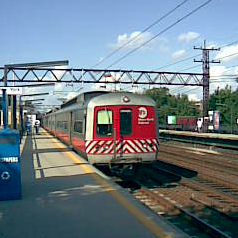“I’m afraid to get back on the train,” said the trembling woman, obviously shaken and possibly injured in the Hoboken terminal train crash of a NJ Transit train earlier this year.

Jim Cameron
Jim Cameron (contributed photo)
The shock of what she had seen was slowly sinking in and she was wondering how she was going to resume her life and its daily train commute after this horrific experience.
Whether it’s a derailment, collision or act of terrorism, riding the train is proving potentially perilous. The Fairfield – Bridgeport collision and derailment in May of 2013 left 65 of the 250 passengers injured, Months later, the Spuyten Duyvil derailment was even worse, killing four and injuring 61. The recent Hoboken crash killed one and injured more than a hundred.
Physical injuries can heal, but emotional trauma may not. And if you have to get from home to work each day, for many of us that means we must take the train.
Like those afraid of flying, at a certain point you have to relinquish control of your life to others — the engineer, the track workers, the control center — and hope they are all alert and doing their jobs. But there are still a few things you can do to protect yourself.
AVOID THE FIRST CAR
It’s usually the front of the train that takes the most violent impact in a crash or derailment. So however anxious you are to get off the train and on to your destination, give yourself a little margin of safety and sit farther back on the train. Derailments are nine times more likely than crashes, so safety experts say the middle of the train is probably safest.
Aisle seats are better than window seats. And rear-facing seats are safer still.
STAY SEATED

A train at the Port Chester, N.Y. station (picture by Titanosaurus at English Wikipedia)
Airlines constantly remind us to stay in our seats even as jetliners are taxiing at slow speed. Yet most railroads say nothing to passengers standing or walking between cars as their train approaches a station.
Most of the injuries in the Fairfield and Hoboken crashes were suffered by standees. On impact, they were tossed around in the train like rag dolls. In their haste to make a speedy exit when their train arrived, they left themselves vulnerable to broken bones when it stopped short, far too fast.
I hope that when the NTSB finishes its investigation of the Hoboken crash they finally issue some recommendations against the standing room only (SRO) conditions we see on far too many trains. Every passenger on a plane must have a seat. Why not the passengers on trains going 80 mph?
WATCH THE OVERHEAD RACK
It’s not just passengers that get tossed in a crash. Heavy luggage on the overhead racks goes flying too. When you pick a seat, don’t sit under anything you wouldn’t want hitting you on the head.
KNOW HOW TO GET OUT
You can’t assume doors will open if there’s a crash. Neither will the windows, some of which are so strong that even rescue workers can’t break them. So read the safety placards and know which windows open and how. When you take your seat, glance around and decide what your options are before you need them.
The airlines make a safety announcement before every flight. But I can’t ever remember hearing a safety reminder on Metro-North. Wouldn’t it help to keep commuters and novice riders aware of safety?
My sincere hope is that the NTSB and FRA will not only solve why these train accidents occur and how to prevent them, but also suggest ways to make them more survivable. That should make all of us feel, and be, safer.
_______________
Jim Cameron has been a Darien resident for 25 years. He is the founder of the Commuter Action Group and also serves on the Darien RTM. The opinions expressed in this column are only his own. You can reach him at CommuterActionGroup@gmail.com
Republished with permission of Hearst CT Media.



Pingback: ConnDOT Commissioner on Changes to CT Rails: Cameron on Transportation - DarieniteDarienite
Pingback: Ongoing Mess at Metro-North: Bad and Getting Worse: Cameron on Transportation - DarieniteDarienite
Pingback: Despite Problems, Catenary Wires Beat Third Rails for Metro-North: Cameron on Transportation - DarieniteDarienite